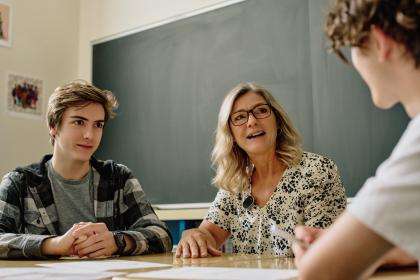
Voting is habit forming. Research tells us that those who vote in the first election in which they are eligible to vote are likely to become lifelong voters. In this article, we will suggest a way to prepare your students, that is, future electors, to participate in elections. You can start by having classroom discussions or by introducing simple, practical ways to participate. Canadian citizens who are between 14 and 17 years old can be added to the Register of Future Electors. The Register is a database that is maintained by Elections Canada. The information in the database (name, address, date of birth, and citizenship) is kept confidential. Based on this data, Elections Canada will know when young citizens are ready to vote in their first election.
Method
Tell your students that one of the simplest ways to get on this Register is to check “Yes” in response to the Elections Canada questions on their tax forms.
By checking “Yes,” young Canadian citizens will have their name included on the Register and, when they turn 18, their information will be entered into another register, the National Register of Electors. Once they are on this new register, when an election is called, they will receive a voter information card that tells them where, when, and the ways to vote.
Why?
Financial literacy is taught in many ways across Canada. If you teach students how to complete their tax forms, you can mention that students under the age of 18 can check “Yes” to get on the Register of Future Electors. You can also inform their parents about this, as they often help their children fill out their tax forms.
Privacy
The privacy of all information in the Register of Future Electors is protected by the Canada Elections Act and the Privacy Act. Elections Canada keeps the information in the Register secure and uses it for authorized purposes only. Under the Canada Elections Act, future electors’ information cannot be shared with political parties, members of Parliament, or candidates.
Of course, teachers who use Elections Canada’s resources can also integrate the message to check “Yes” on their students’ income tax forms into the consolidation of a lesson. Checking “Yes” is a simple but meaningful way for students to engage in the democratic process before they turn 18 and ensure they get the information they need to vote in a federal election for the first time.
Visit Elections Canada’s website for more information.

